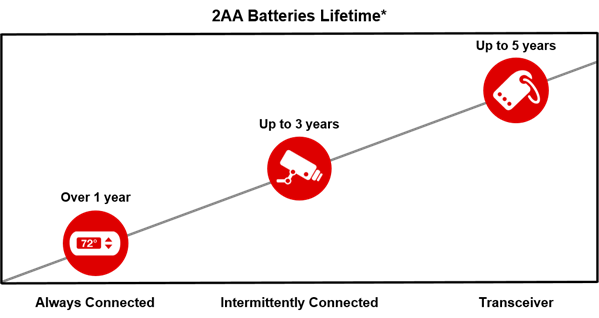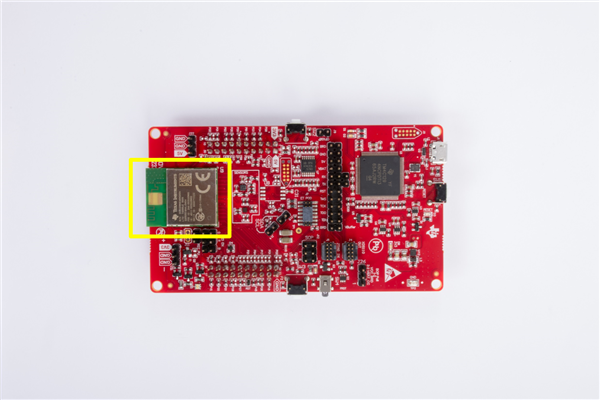SSZT905 November 2017 CC3120 , CC3120MOD , CC3220MOD , CC3220MODA
Today’s world is crowded with lots of connectivity technologies, resulting in new types of smart products coming to market daily. With this sort of rapid growth, you need to overcome a few challenges in order to create, produce and market differentiated Internet of Things (IoT) products, including:
- Security.
- Power consumption.
- Limited development resources.
- Evolution of connectivity standards.
In this blog post, I will discuss how new low-power wireless microcontroller (MCU) devices with enhanced security features can help address these challenges.
Why Does Security Matter?
As demonstrated by the major distributed denial of service (DDoS) attack late last year and the recent accidental bricking of smart locks, connected products are subject to a range of security attacks from different vectors, including even routine over-the-air (OTA) firmware updates.
Low Power Consumption Breeds Innovation
Consumers cringe when they hear that annoying chirp signaling a dying battery in a smoke detector. In a factory, changing a sensor battery in a hard-to-reach place can be outright dangerous. With the installation of more and more wireless IoT devices in buildings or factories, longer battery life is a must, in reducing overall system energy consumption.
Alternatively, an application such as a surveillance camera that requires a continuous wireless connection could operate on a 5,000mAH capacity battery for up to two years by leveraging the CC3220 devices’ low-power deep-sleep mode, which consumes 135µA. Figure 1 provides examples of common low-power profiles of SimpleLink Wi-Fi devices.
 Figure 1 SimpleLink Wi-Fi Common Low-power Profiles
Figure 1 SimpleLink Wi-Fi Common Low-power ProfilesThe power consumption of an IoT node is greatly affected by the behavior of the access point (AP) to which it connects. The CC3220 wireless MCU includes TI’s proprietary network learning algorithm to ensure consistent low-power numbers with various APs (more than 200 APs) worldwide. Products using the CC3220 device are deployable anywhere and perform well with most APs, while keeping a low power profile.
The Complete Ecosystem to Get to Market
Connected device developers are being pressured on all sides to get to market quickly with limited internal manpower. By using SimpleLink Wi-Fi solutions, you have help from drop-in modules, an IoT cloud ecosystem, extensive interoperability testing, transferrable Wi-Fi certifications and many development tools.
 Figure 2 Wi-Fi Module on the LaunchPad™ Kit for Easy Development
Figure 2 Wi-Fi Module on the LaunchPad™ Kit for Easy DevelopmentThe TI IoT cloud ecosystem also gives you easy access to a wide range of cloud service provider plug-ins, including Apple’s HomeKit, Amazon Web Services, IBM Watson and Microsoft Azure.
Achieving Wi-Fi Alliance certification can usually take months for a development team. By using Wi-Fi CERTIFIED CC3220/CC3120 devices, you can easily transfer TI’s Wi-Fi certification to your final product. Additionally, TI performs interoperability testing with more than 200 of the most popular Wi-Fi APs and routers. So you can concentrate on differentiating features that will provide a competitive advantage when your product gets to market, with the assurance of a robust and Wi-Fi CERTIFIED solution.
No Device Is an Island; Planning for Scalable Designs
Bringing a product to market is one thing, but having a strategy for being a long-term player in the IoT, cloud computing and connectivity marketplace is quite another. Developers need to adapt as application requirements evolve. The SimpleLink MCU platform ecosystem (Figure 3) enables and supports such a strategy. SimpleLink MCU devices share the same software development environment and unified tool chain, while supporting a range of connectivity standards including Wi-Fi, Sub-1 GHz and Bluetooth® low energy. Therefore, you can reuse the knowledge and code you learn on one device to expand or update your IoT product offerings when application requirements change.
 Figure 3 You Have Access to a Range of Tools and Resources with the SimpleLink MCU Platform
Figure 3 You Have Access to a Range of Tools and Resources with the SimpleLink MCU PlatformThe innovations packed into the SimpleLink Wi-Fi CC3220 wireless MCU can help you address these IoT challenges, so you can focus on creating a differentiated, secure product.
Get started today and accelerate your development to production with the SimpleLink MCU platform.
Additional Resources
- To learn more about low-power consumption:
- Download the application note, “SimpleLink CC3120, CC3220 Wi-Fi Internet-on-a chip Networking
Subsystem Power Management.”
- Watch the “SimpleLink Wi-Fi CC32XX Power Management Framework” video.
- To learn more about security:
- Order your Wi-Fi module:
- Download the application note, “SimpleLink CC3120, CC3220 Wi-Fi Internet-on-a chip Networking
Subsystem Power Management.”